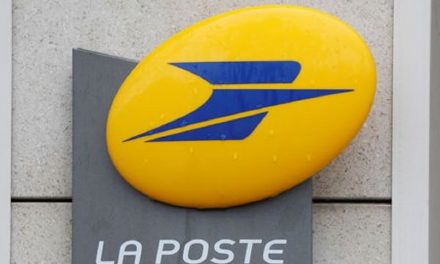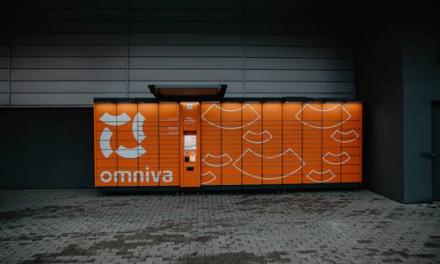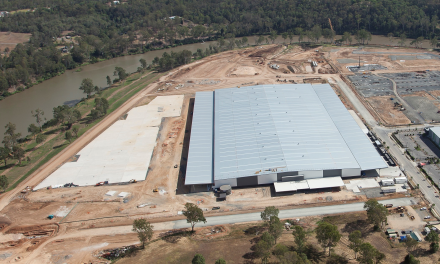
Change management

Louise Ryan, strategy and business development director at Pass My Parcel, surveys the changing landscape of parcel delivery. In recent years, the parcel delivery industry has evolved almost beyond recognition. The flourishing e-commerce sector has opened up seemingly endless opportunities for parcel delivery businesses – as long as they are agile enough to respond to change.
The rise of online retail over the past decade has paved the way for a new generation of parcel delivery firms, which are continually adapting to meet demands in the market. Giants like Amazon and ASOS may have fuelled the rise, particularly with events like Black Friday and Cyber Monday, but courier services are now also more accessible to small business owners and members of the public.
It wasn’t so long ago that deliveries were limited to a fixed time and location, usually an office or home address – and if customers were out when the parcel arrived, they had the headache of going to retrieve it from the local depot. But today convenience is king, and in the competitive world of retail, the range of delivery options is key to improving customer experience and driving sales.
Certainly, with most people out at work all day, and some leading companies clamping down on personal deliveries during office hours, parcel firms have had to adapt quickly. It has never been easier for time-pressed customers to pick up their delivery at a time to suit them, as shown by self-service Amazon lockers in stores like Co-op Food and major shopping centres.
For Pass My Parcel (PMP), it is our partnerships with independent newsagents and convenience store owners that have enabled us to build a nationwide network of pick-up and drop-off points. This has now grown to more than 3,500, meaning we can serve 93 per cent of the UK mainland population.
The advantage for customers is that these shops are open from early morning until late evening, usually seven days a week, so they can pick up parcels before they go to work, at lunch-time or on their way home. Another benefit is that retailers like Amazon are able to provide next day delivery on orders placed up to 7.45pm and evening collection for orders made before 11.45am. Parcels are also held securely for up to seven days, providing extra peace of mind if a customer has to pick it up slightly later than intended.
Post offices were once at the heart of every community, but following widespread branch closures in 2007, convenience stores have arguably plugged this gap. It is interesting to note that as part of its major modernisation programme, the Post Office has seen the potential of operating its services from garages and small local shops. This has enabled it to offer the extended opening hours that customers have come to expect, without vastly increasing its estate management costs.
However, demand for courier services is not only driven by online sales – returns account for a large volume of deliveries too. Despite the fact that returns put enormous pressure on retailers’, to the extent that it is barely worth processing them, they have to offer the service to stay ahead of rivals.
A customer is unlikely to buy an outfit for a special occasion if they cannot try it on as they would in a store, so a returns option is essential. Indeed, the promise of free returns is often a major factor in their purchasing decision and they may buy several items before deciding which one to keep.
The sheer volume of returns has opened up new opportunities for courier firms delivering the service. PMP, for example, has recently introduced a label-less returns system that enables customers to drop off an ASOS order using a QR code on their smartphone, rather than having to physically print it out.
Of course, the huge number of parcels changing hands every day poses a number of challenges, and congestion is one of them. Figures from the online retail association IRMG show that in March, the volume of deliveries was up nearly 23 per cent on the previous year, demonstrating just how strong the sector now is.[1] This is a welcome boost for the warehousing and logistics industry, but there is no escaping the fact that it also increases the number of vehicles on the road.
Those working in logistics are all-too-aware of how persistent gridlock can slow down operations and eat into profits. This is one of the reasons why bulk delivery to convenience stores, rather than single addresses, plays a pivotal role in reducing the number of vehicles on the road. It also reduces the problem of failed delivery, as customers can simply call at their local shop when it suits them.
Given these high volumes, it has become even more important for parcel delivery firms to operate a flexible schedule. Avoiding rush hour is one way to limit congestion and it has clear commercial incentives too. In London, for instance, freight vehicles make up 25 per cent of traffic between 7am and 11am so it makes sense to avoid these times, not least because drivers have to pay the congestion charge from 7am. From the autumn, those with vehicles made before 2006 will also be subject to a £10 T (toxicity) charge, making delivery even more costly.
For PMP, which has 589 parcel shops in the capital, the ability to work outside these hours is crucial. The fact that the company is part of news wholesaler Smiths News means that we have an established distribution network and can also deliver newspapers and magazines in one run and parcels on the return, thereby making every journey count. Furthermore, our fleet of vehicles is largely leased, which means we can easily scale up or down according to demand.
As in any sector, new technology is driving the parcel delivery sector forward at tremendous speed. From Amazon’s drone service to real-time GPS tracking, delivery has become faster and more targeted than ever before. Other innovations, like the underground transport system developed by Cambridge-based Mole Solutions, promise to make the process more automated.
While this technology is undoubtedly exciting, we value the contribution our partners make above all else. Many independent retailers have struggled to compete with the supermarkets’ convenience stores so they want to diversify with other services like parcel pick-up. We have found that they are keen to join our network, not only because of the handling fee, but because the extra footfall usually results in more sales. Supporting them in this has been built into our business strategy, and we provide a dedicated team to handle technical issues and other enquiries.
Nobody could have foreseen just how much the online retail sector would change, bringing with it a host of benefits to logistics and parcel delivery firms. There will be challenges in the years to come, whether from rising fuel costs, congestion and even greater customer demand, but the industry has already proved that it can turn them into exciting opportunities and I am confident this will continue.
For more details on Pass My Parcel, visit www.passmyparcel.com.
Notes:
[1]https://www.imrg.org/media-and-comment/press-releases/a-record-monthly-increase-for-march-delivery-volumes/













